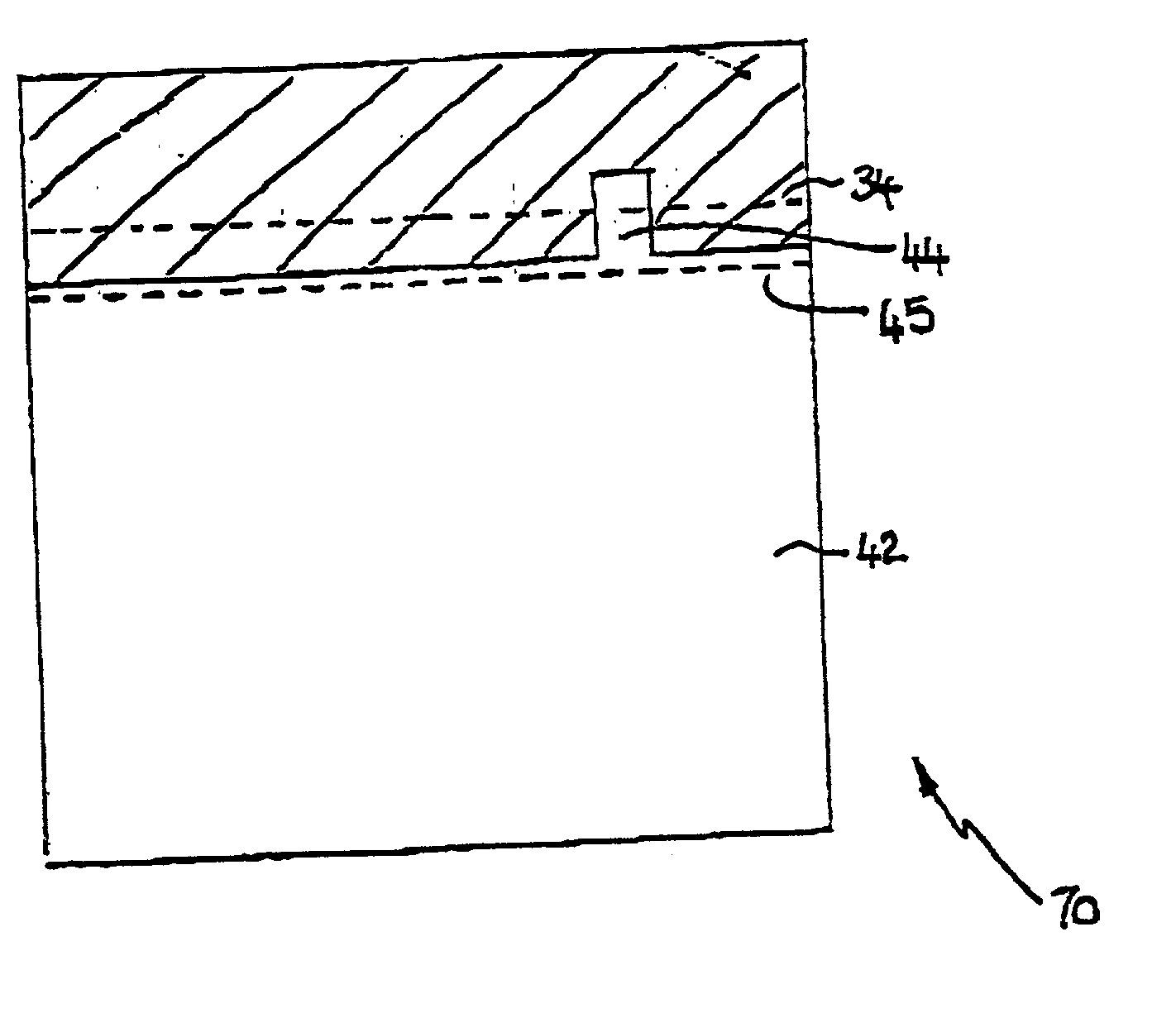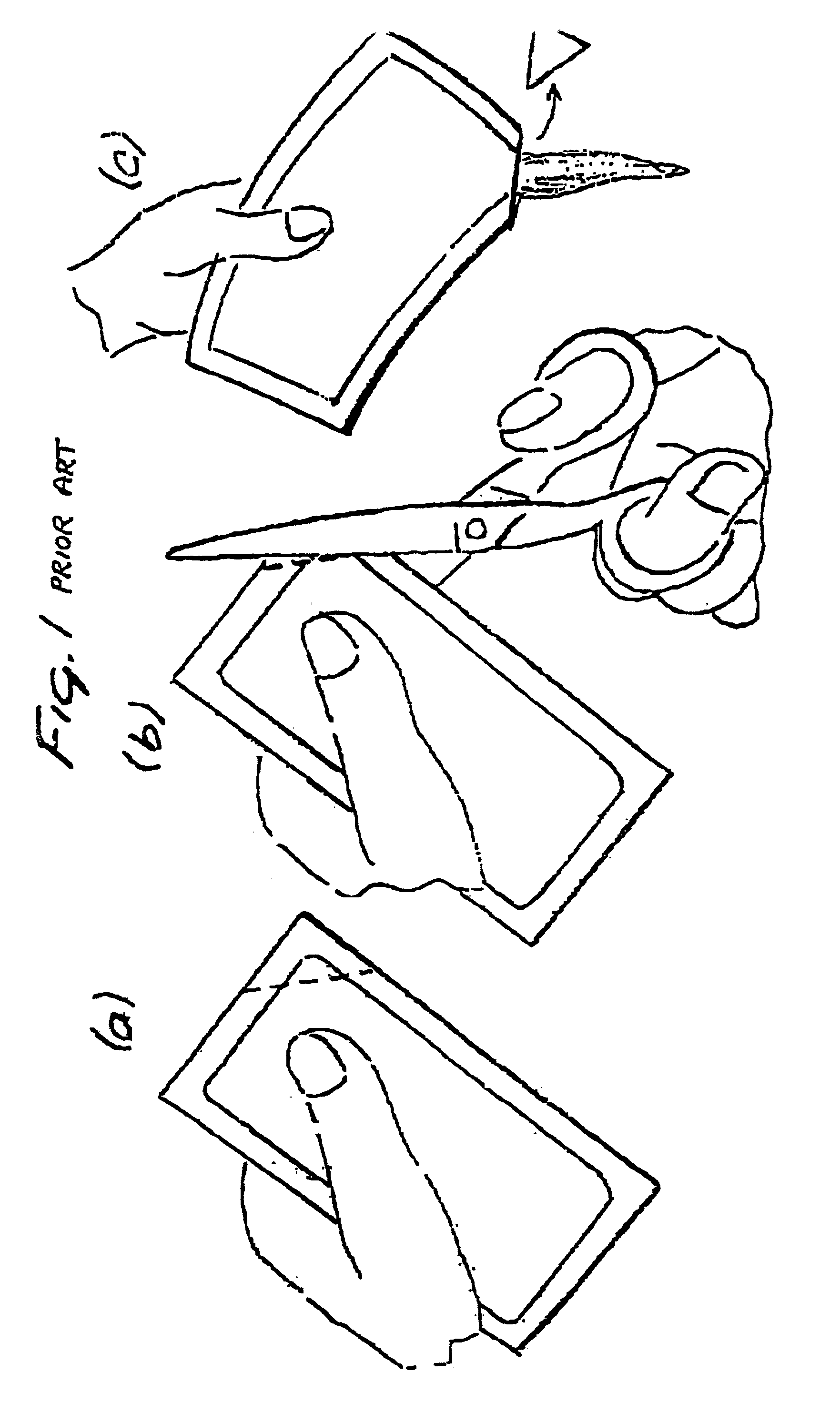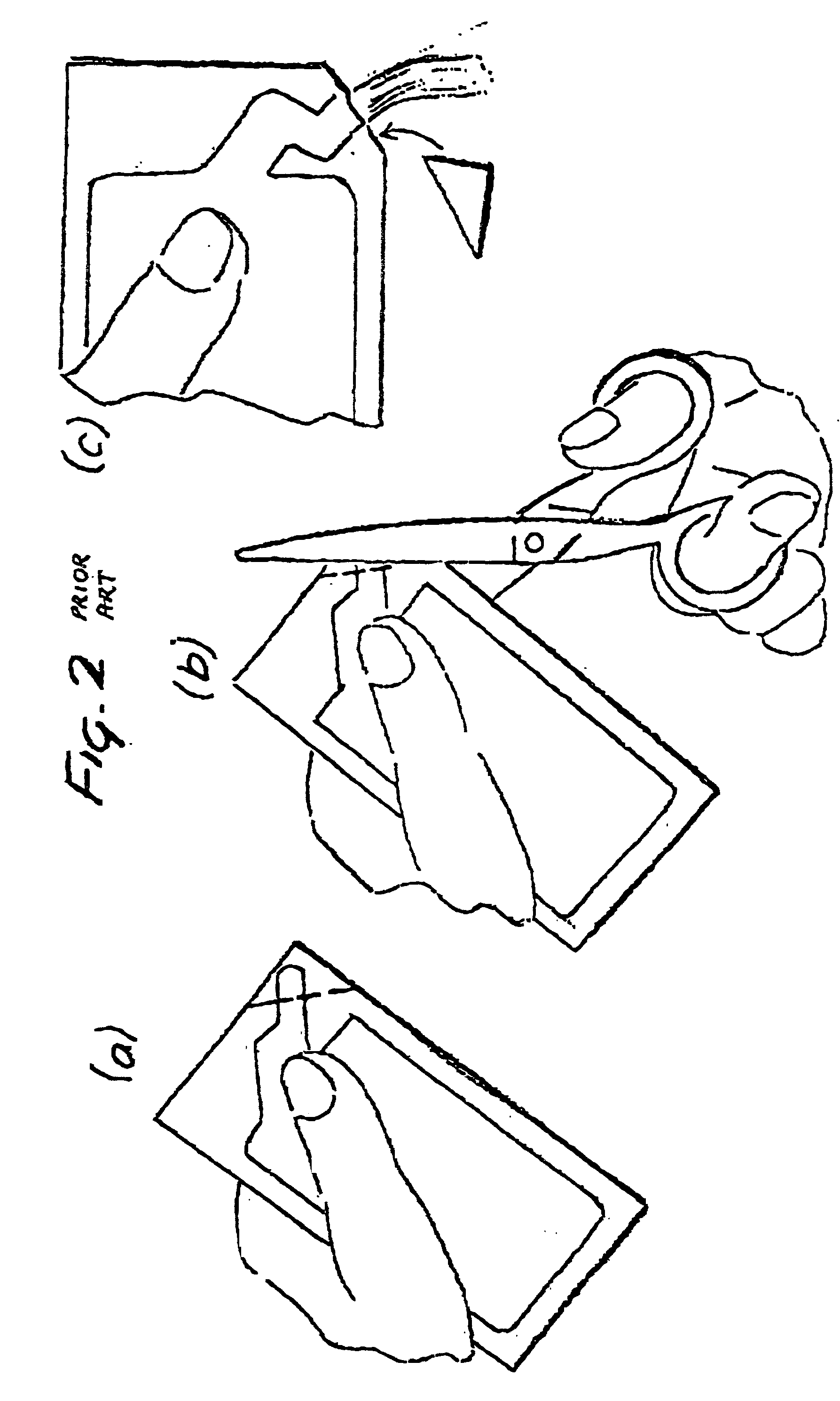Easy tearing bags and packaging material
a technology of packaging material and tearing bag, which is applied in the direction of transportation and packaging, sacks, synthetic resin layered products, etc., can solve the problems of inner layer weakness, and achieve the effect of facilitating the initiation of a tear
- Summary
- Abstract
- Description
- Claims
- Application Information
AI Technical Summary
Benefits of technology
Problems solved by technology
Method used
Image
Examples
second embodiment
[0096] The second embodiment illustrated in FIG. 8 utilises two sheets of the ACE laminate illustrated in FIG. 6. Each of the sheets ACE include three layers namely:
[0097] a transparent outer layer A over-printed with a colour pattern;
[0098] an inner layer C comprising two abutting pieces, one being a thin metallised strip and the other being a wide transparent piece;
[0099] and an additional transparent layer.
[0100] The two sheets ACE of laminated flexible material are aligned and overlapped with one sheet laid directly upon the other, ensuring that the interface between the abutting pieces on respective sheets are aligned. As illustrated in FIG. 8b, three edges of the two sheets are heat sealed together leaving unsealed aligned edges at one open end The bag can then be filled with contents as illustrated in FIG. 8b through the open end prior to the edges at the open end being sealed as illustrated in FIG. 8c. The bag 30 so formed is then provided with a nick 32 along a first edge o...
sixth embodiment
[0107] In a sixth embodiment illustrated in FIG. 10, a ziplock is incorporated during manufacture to provide a resealable bag 80. The ziplock 82 is disposed closer to the contents of the bag than the aligned lines of weakness 34. In this way, once the bag has been torn along the lines of weakness 34, the bag can be resealed through the use of the zip-lock 82.
[0108] Figures 11a and 11b show a bag 90 which is similar in construction to the bag 30 illustrated in FIG. 8, except that a top end of the bag is sealed to almost the lines of weakness 34 and additionally the bag is sealed together in strips along its length to form partitions 92 thus creating compartments ABC in the bag. It can be seen from FIG. 11a that the partitions 92 cross the lines of weakness 34. As this bag is tom open, the compartments A, B and C are opened in series. With a single tearing motion, these three compartments can be opened essentially simultaneously. However, if the tearing motion is punctuated then the c...
tenth embodiment
[0113] FIGS. 13a and b illustrate the present invention. The bag formed 120 is similar in principal to the bag 100 shown in FIG. 12, except that there are nine compartments arranged in a three by three grid array. Additionally, the ACE sheet has six parallel lines of weakness 122, adjacent pairs of which extend across three aligned compartments as illustrated in FIG. 13b.
[0114] As an alternative to using a sheet of polythene P as the backing sheet as per FIG. 13a, a preformed blister sheet can be used as illustrated in FIG. 13c. Such an embodiment of the invention may have application in the pharmaceutical industry.
[0115] A twelfth embodiment is illustrated in FIG. 14. In this embodiment a bag 130 is formed by two overlapping and aligned sheets. A gusset portion 139 is provided in the base of the bag and the sheets and the gusset portion are sealed together. The sheets of the bag are also sealed together at a top portion 132 of the bag 130.
[0116] Additionally, a gusset portion 137 i...
PUM
| Property | Measurement | Unit |
|---|---|---|
| Temperature | aaaaa | aaaaa |
| Length | aaaaa | aaaaa |
| Size | aaaaa | aaaaa |
Abstract
Description
Claims
Application Information
 Login to View More
Login to View More - R&D
- Intellectual Property
- Life Sciences
- Materials
- Tech Scout
- Unparalleled Data Quality
- Higher Quality Content
- 60% Fewer Hallucinations
Browse by: Latest US Patents, China's latest patents, Technical Efficacy Thesaurus, Application Domain, Technology Topic, Popular Technical Reports.
© 2025 PatSnap. All rights reserved.Legal|Privacy policy|Modern Slavery Act Transparency Statement|Sitemap|About US| Contact US: help@patsnap.com



